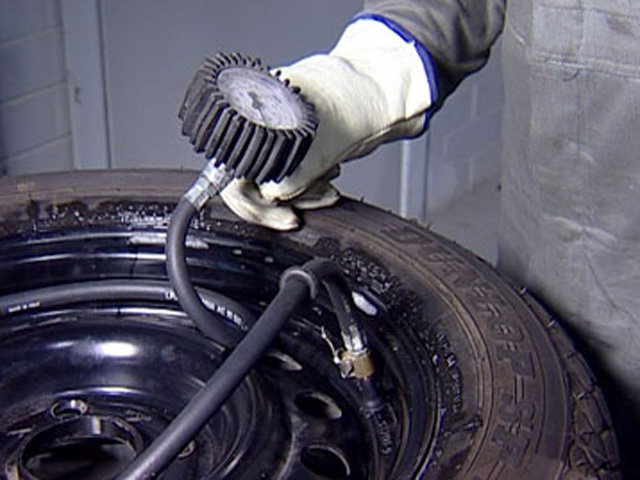Your tires are where the rubber meets the road – literally – when it comes to the safety and performance of your car. That means, if your tire is leaky, you could be putting your safety at risk.
A leaky tire causes low tire pressure, which can decrease fuel economy, and put you at risk for a blowout. It also decreases the ability of your car to handle properly, making it more difficult to respond to emergency situations or drive in inclement weather.
In this article, we’ll discuss how you can diagnose and fix slow tire leaks. Don’t just ignore that low pressure sensor – check out this guide!
The Most Common Causes Of Slow Tire LeaksThere are three common issues that cause slow tire leaks. Let’s discuss each one of them now.
If your valve stem is damaged, there will be a slow and constant leak. This leak could come from either the body of the valve, or the base of the valve, where it meets the tire.
Contrary to popular belief, puncture damage usually doesn’t lead to an immediate flat tire or blowout, in most cases. This is because the object usually remains lodged in the rubber, preventing air from leaking quickly.
There are a few ways you can diagnose a slow tire leak
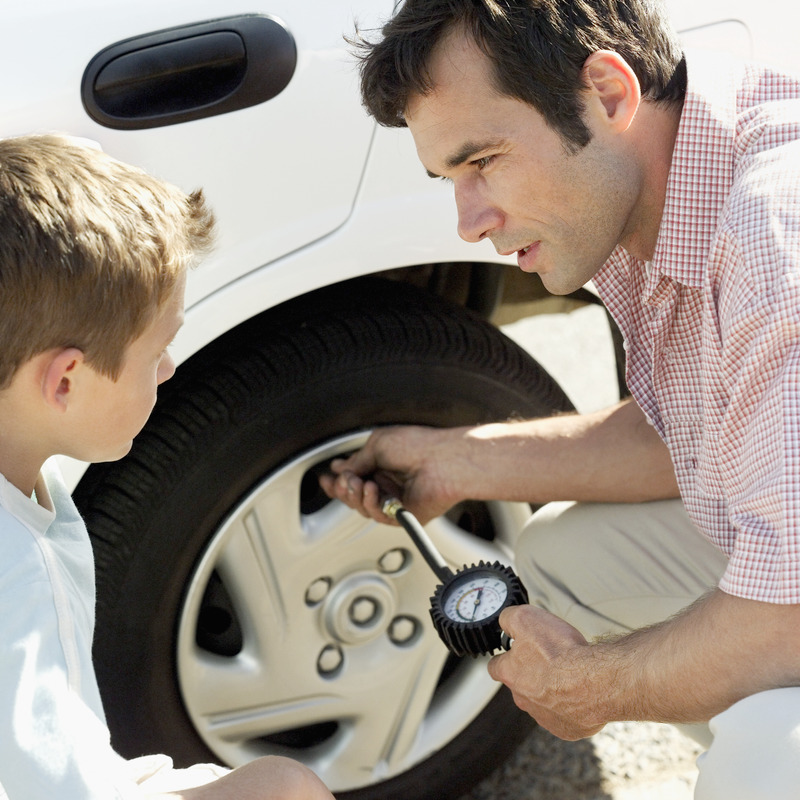 If one of your tires seems perpetually under inflated, chances are you have a leak.
If one of your tires seems perpetually under inflated, chances are you have a leak.If you have a slow tire leak, you’ll want to have it repaired professionally as soon as possible. In some cases, you may want to keep a tire plug or patch kit in your vehicle. These kits are easy to use, and can keep your tire inflated until you bring it to a professional tire repair shop.
To permanently fix a tire leak caused by a puncture, you will need a “plug and patch”. This method of repair involves removing the tire from the wheel, and placing a combination plug and patch on the tire.
If your leak is caused by a faulty valve, you may need to replace it or your tire. Leaks caused by a damaged mounting surface may require you to replace the entire wheel.
Leaks caused by a damaged mounting surface may require you to replace the entire wheel.
If you need to repair a tire damaged by a puncture, or you think your valve or mounting surface may be damaged, we can help!
Schedule your appointment on Ride Time today, and come to our service centre now in Winnipeg, to make sure you stay safe on the roads!
A slow tire leak is more than just a nuisance. A leak can lead to low tire pressure. Not to mention, prolonged running on an underinflated tire can lead to more extensive tire damage or even cause a dangerous blowout.
If you’re experiencing a slow leak, here are some things to look for:A tire puncture: It is a common misconception that a puncture will cause the tire to immediately go flat. However, in many cases the object that caused the puncture remains lodged in the tire and prevents the air from leaking out quickly.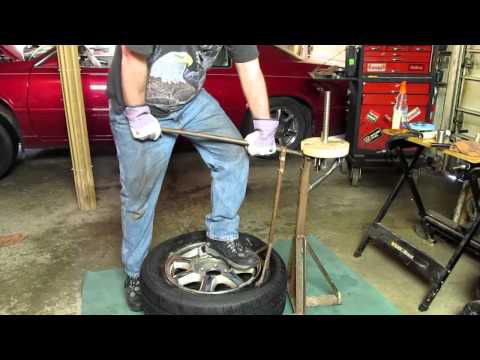 As with all tire leaks, it is important not to ignore a puncture. Eventually to object will either wear down and/or work its way out of the tire. For more on this read our article How to Repair a Tire with a Safe, Permanent Fix.
As with all tire leaks, it is important not to ignore a puncture. Eventually to object will either wear down and/or work its way out of the tire. For more on this read our article How to Repair a Tire with a Safe, Permanent Fix.
Wheel damage: Another common cause for slow tire leaks is damage to the area where the tire bead meets the rim. This type of damage is typically cause by the driver hitting the curb, taking a speed bump at high speeds OR those dreaded potholes! The impact deforms the wheel’s metal surface which may cause the tire to pull away from the mounting surface of the wheel.
Valve stem damage: The third most common cause for slow tire leaks is worn out or damaged valve stems. Time, use and exposure to elements can cause your valve stems to wear out and cause leaks.
Diagnosing your tire leak:
If your vehicle is equipped with TPMS, you will know right away if you have a leak. If the sensor light on your dashboard goes off, you inflate all the tires back to proper pressure and the light goes back on a few days later – you likely have a leak.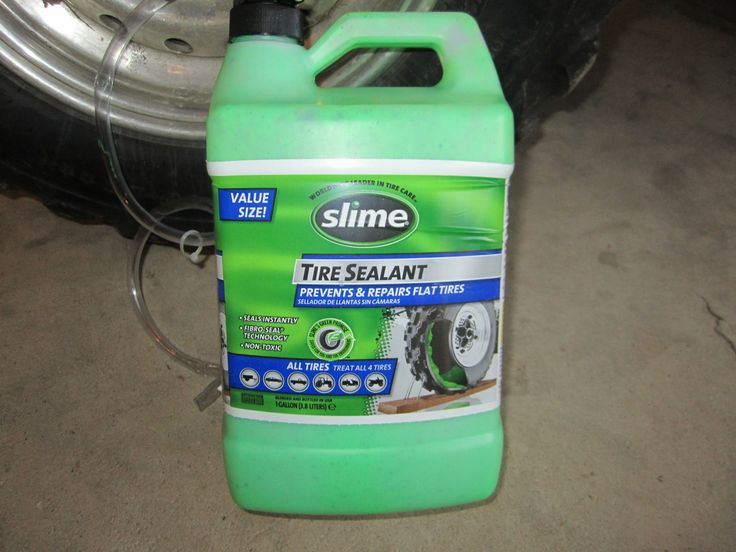 If your vehicle does not have TPMS, its important to check your tire pressure regularly.
If your vehicle does not have TPMS, its important to check your tire pressure regularly.
Once you’ve identified that you have a leak, use TECH Chek to locate the source of your leak. Simply spray the product all around the tire. Where the surface of the tire begins to bubble is likely the source of your leak.
It’s important to have your tire diagnosed by a professionally trained tire shop or mobile tire repair service as soon as possible. In the case of a puncture, you may want to use a tire repair kit to keep your tire properly inflated until you can have it serviced. The leak should then be permanently fixed using a proper tire repair consisting of a cured rubber stem and repair unit.
If the leak is caused by a damaged valve, a trained tire technician can typically replace the valve at a minimal cost. In some cases, however, the tire may need replaced.
If the leak is caused by a damaged wheel, a tire technician may be able to reseat and seal the tire using a bead sealer. However, if the damage to the wheel is significant, unfortunately that means you may need to replace the wheel itself.
However, if the damage to the wheel is significant, unfortunately that means you may need to replace the wheel itself.
To read more about the types of damage that can and cannot be repaired, click here!
Most of the cars are equipped with wheels without a tube, which maintain pressure in the tire during a puncture.
They guarantee safe driving even when flat, and with little damage they can hold their shape for several days. Despite their practicality, you should immediately look for the causes of wheel leaks. If you do not repair a punctured car tire in advance or do not fix warped alloy wheels, the operation of the car will lead to an emergency.
Since even tubeless tires flatten for no apparent reason, you need to carefully inspect the car and the condition of the wheels in order to detect a malfunction in advance. This will help to avoid a number of problems during the trip. Driving with flat tires adversely affects the performance of the machine. The vehicle has poor traction, the steering wheel pulls to the side with a bad tire, acceleration and braking are deteriorating. If the tires of the car are slowly deflated, this leads to increased fuel consumption.
This will help to avoid a number of problems during the trip. Driving with flat tires adversely affects the performance of the machine. The vehicle has poor traction, the steering wheel pulls to the side with a bad tire, acceleration and braking are deteriorating. If the tires of the car are slowly deflated, this leads to increased fuel consumption.
To understand the problem, let's examine the reasons for which it releases air:
 This will lead to depressurization.
This will lead to depressurization.  The next reason, due to which air is slowly bled, is difficult to notice on your own. Since a faulty nipple deflates silently, only specialists will be able to detect the problem. During repair, you need to disassemble the wheel. This will provide the necessary access to glue the place where the nipple fits on the cast disk.
The next reason, due to which air is slowly bled, is difficult to notice on your own. Since a faulty nipple deflates silently, only specialists will be able to detect the problem. During repair, you need to disassemble the wheel. This will provide the necessary access to glue the place where the nipple fits on the cast disk. It is often difficult to find the reason why the air in the wheel slowly bleeds. Even the masters can not always immediately detect a malfunction. You can find the problem yourself in the following way - pump over 1-2 atmosphere and listen to see if air comes out. If no sound is heard, then the wheel is wetted in a soapy solution and lowered into water. The area where air will begin to bubble will be the puncture site.
In cases where the wheel bleeds air on the car, but does not deflate when it is removed, it is necessary to disassemble and wipe the inside of the tire. In the presence of sharp objects, the fabric will catch on, indicating the puncture site.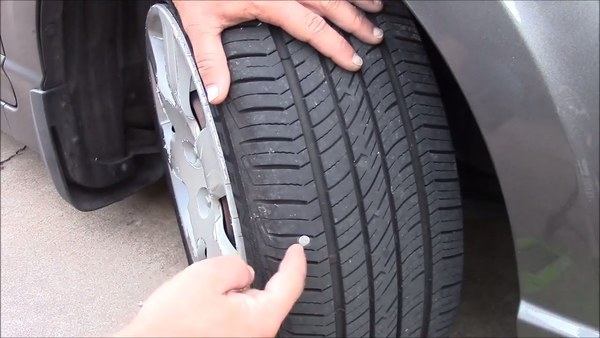
Detect the causes of rubber puncture near the nipple, on the rim of the alloy wheel or in the tread using indirect causes: ;
If the tire on the car began to slowly deflate as a result of a side cut, then such a repair is not easy even for masters. Unlike a tread puncture, the area near the rim of an alloy wheel is softer and thinner. This does not allow you to put a patch or install a harness. Even after removing the cause, the damaged wheel will slowly bleed under load. Also, repairing a side puncture is dangerous because it affects the durability of the tire. Therefore, with a strong side cut, it is better to change the wheel to a new one.
Therefore, with a strong side cut, it is better to change the wheel to a new one.
In the event that a tread puncture is the cause of air bleeding, the tire can be easily repaired. It is important that in this case the rim of the cast disk is not damaged, and the hole size is no more than 4-5 mm. If a larger object hits, it will not be possible to repair the wheel on your own, so you need to sign up for a service station. If the tire on the car descends slowly, and the puncture diameter is several millimeters, a rubber band, glue and an awl will be needed for repair.
If the tire bead does not seal against the rim, the defect in the cast rim must be repaired first. There are many reasons why a dent appeared on the surface - due to falling into a hole at speed, upon contact with the curb. If you do not align the disk, the tire will slowly deflate, it may depressurize when driving a car. Dents are "rolled" in the service. You can fix the breakdown on your own on the road with the help of a heavy object - sometimes it is enough to hit the rim with a hammer to stop lowering.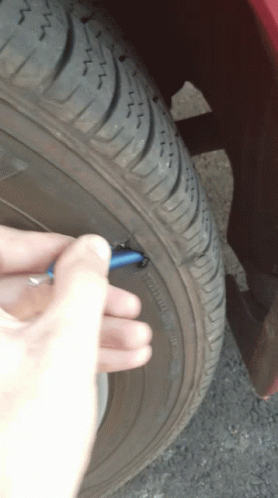 However, this is a temporary option.
However, this is a temporary option.
If the rim is OK and the wheel continues to bleed, the problem may be in the spool. On the road, such a “puncture” can be corrected by pressing hard on the nipple. In case of deformation of the nipple, contact the specialists, as it needs to be changed.
Since the wheel itself may be the reason why the wheel began to deflate, let's look at the problem in more detail. The rim is damaged when hitting a curb, due to old age or improper storage, which affects the tightness of its fit to the tire. Deformation of a cast wheel is also possible due to poor-quality alloy.
In case of advanced corrosion or mechanical damage to the rim, the disc is repaired or replaced with a new one. It is forbidden to pour sealant inside. It won't fix the rim problem, but it will definitely ruin the tire.
Summer Drive Protection Sound Comfort
Rating:
4. 5
5
Tires Goodyear Eagle F1 Asymmetric 3 SUV
Summer Drive protection
Rating:
4.5
Tires Goodyear Eagle Sport TZ
Summer Drive protection
Rating:
4.5
Tires Goodyear EfficientGrip 2 SUV
Summer Drive Protection Run On Flat
Rating:
4.5
Tires Goodyear EfficientGrip Performance
Winter Drive protection
Tires Goodyear UltraGrip Arctic 2 SUV
Winter Drive Protection Sound Comfort
Rating:
4.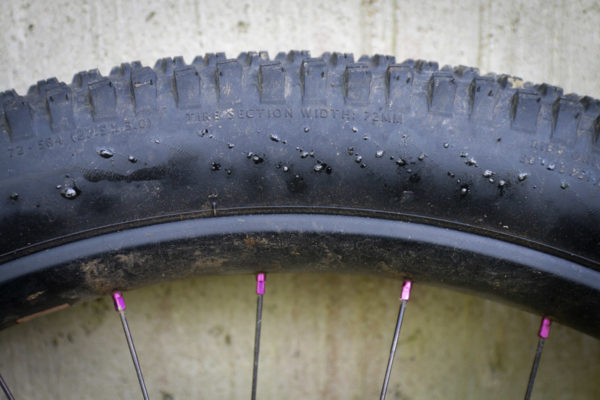 5
5
Tires Goodyear UltraGrip Ice 2
Winter Drive Protection Sound Comfort
Rating:
4.5
Tires Goodyear UltraGrip Ice SUV
Winter Drive protection
Tires Goodyear UltraGrip Performance+ SUV
All season Drive protection
Rating:
5
Tires Goodyear Vector 4Seasons Gen-3 SUV
Summer Drive Protection Run On Flat
Rating:
4
Tires Goodyear Wrangler HP All Weather
All season Drive protection
Rating:
4. 5
5
Tires Goodyear Vector 4Seasons
Summer
Rating:
4.5
Tires Goodyear Wrangler All-Terrain Adventure with Kevlar
Summer Drive protection
Rating:
4.5
Tires Goodyear EfficientGrip SUV
Summer Drive Protection Run On Flat
Rating:
4
Tires Goodyear Eagle F1 Asymmetric SUV
There are many reasons why a tire deflates. First of all, punctures occur due to foreign objects that are found on the roads - screws, metal fragments, glass and other debris. Breakage can occur due to a rim that has fallen into a hole, which cracks and begins to bleed air. Tires can also be damaged due to a malfunctioning suspension of the car, which increases the load on the rubber.
First of all, punctures occur due to foreign objects that are found on the roads - screws, metal fragments, glass and other debris. Breakage can occur due to a rim that has fallen into a hole, which cracks and begins to bleed air. Tires can also be damaged due to a malfunctioning suspension of the car, which increases the load on the rubber.
Having studied the reasons why flat tires, let's summarize. In order not to create an emergency during the trip, you need to check the discs for wear, measure the pressure regularly. If you find a defect, contact a specialist. For repairs in extreme conditions, we recommend having a set of harnesses, keys and a jack in the trunk, it is worth putting a full-fledged spare tire.
There are several ways to fix a leaking bicycle tire. The most common way is to use a patch kit. The patch kit includes all the necessary tools and materials to repair a punctured or broken tire. You can also try using sealant or glue to fix the leak.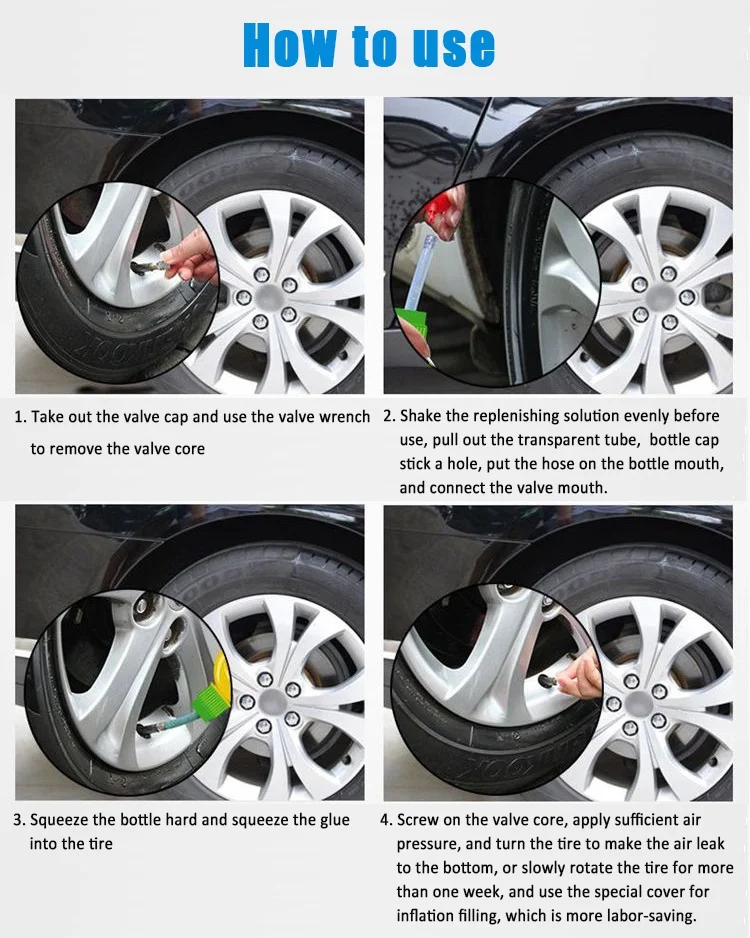 small, you can use a needle and syringe to fill the hole with air and seal it with glue. If the leak is larger, you need to replace the tire.
small, you can use a needle and syringe to fill the hole with air and seal it with glue. If the leak is larger, you need to replace the tire.
There are several different ways to fix a slow leak in a bicycle tire. One way is to use a patch kit. The patch kit includes various patches and glue so you can fix the leak quickly and easily. small, you can use a tube to close the hole and prevent the tire from leaking. If the leak is larger, you need to replace the tire.
There are several things you can do to fix a leaking bicycle tire. The most common solution is to inflate the tire with air and pump it up until the leak stops. You can also try using sealant or repair material to fix the hole in the tire. If these solutions do not work, you may need to replace the tire.
There are several reasons why your bicycle tire may be leaking air. The most common cause is a loose tube from the rim or valve damage. If you can't fix the leak yourself, you may need to take your bike to a mechanic for repair.
The most common cause is a loose tube from the rim or valve damage. If you can't fix the leak yourself, you may need to take your bike to a mechanic for repair.
To fix a leaking bicycle tire, first make sure it's not due to a bad tube or valve failure. tube wall. In this case, you need to replace the entire tire.
Here are some tips on how to fix a leaking bicycle tire:
- Check if the tube has moved by gently rocking it between your fingers. If it moves freely, then it is correctly installed on the rim.
- If there is no problem fitting the tube, try tightening any loose bolts on both sides of the wheel with a wrench (a 32mm wrench will do). Be careful not to overtighten as this could cause damage and further leaks.
- If that doesn't work, check for tears or holes in the shroud around where the valve stem attaches to the tire sidewall (usually where you can see dirt or debris stuck inside). A puncture also often results in a leak in this area.
If your bicycle tire is leaking air, it needs to be repaired. There are several ways to tell if your tire needs repair:
-Your bicycle will not withstand air pressure
- The tire feels too soft or springy when you touch it.
- You see bubbles coming out of the tire.
- The tread of the tire is badly worn.
There are several things you can do to fix a leaking bicycle tire. The most common cause of a flat tire is a hole in the tube itself. tube, remove the wheel from the bike and unscrew the stem cap. Remove the old tube and screw in the new one. Replace the stem cap and wheel and you are ready to ride again! Another common problem with bikes is air bubbles inside the tires. When this happens, the pressure builds up to until it gets too big and the tire bursts. To solve this problem, inflate the tires until they fill with air, then let them go again. This should burst any air bubbles that were causing the problem.
This should burst any air bubbles that were causing the problem.
There are several things you can do to try and fix a leaking bicycle tire. One option is to use duct tape to seal the puncture in the tire. This will help prevent air leakage, but it may not last long. Another option is to replace the tire. If the leak is small, you can fix it by re-inflating the tire and using a bandage or band-aid to hold it in place. If the leak is larger, then the tire needs to be replaced.
There are several ways to fix a leaking bicycle tire. One option is to use patches or plugs. The patches are easy to apply and can be removed if the tire needs to be replaced. Plugs, on the other hand, are more durable and require special tools to remove them.
The best way to fix a flat bicycle tire depends on the cause of the problem.